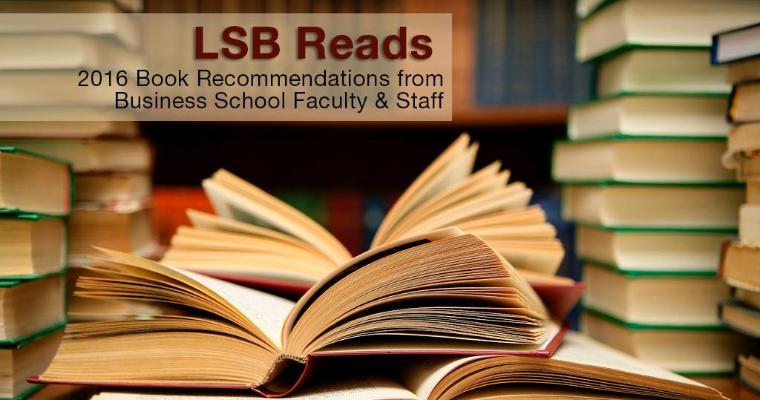
LSB Reads 2016
We’ve asked the Leavey School of Business community what books challenged, informed, and entertained them over this summer. Here is what they had to say...
John Blumenson
Program Manager, Executive Development Center
Berlin Noir (A Trilogy); The Lady from Zagreb, and; The Other Side of Silence, by Phillip Kerr
These books are all a part of the "Bernie Gunther" mystery series. The books follow Bernie Gunther, an anti-Nazi German World War One veteran, Berlin homicide detective, and private investigator, as he solves crimes, gets involved with mobsters (ranging from petty criminals to high ranking Nazis) and nefarious characters between 1933 and 1954. His adventures take him throughout Europe as he solves crimes, commits crimes, and stays one-half step ahead of the authorities (most of the time). Mysteries are typically not my genre, however, I did enjoy the author's historical novels and plan on reading more by Phillip Kerr.
The Winemaker's Dance: Exploring the Terrior of the Napa Valley, by Jonathan Swinchatt & David G. Howell
For the true wine lover (not just of Napa Valley), this beautifully printed yet painfully written book explains in excruciating detail how the Napa Valley was formed over millions of years and how the concept ofterrior evolves. As I am neither a geologist nor a scholar of the natural sciences, I actually read the book twice. The first read was to wrap my mind around the formation of the Napa Valley and the impact of geologic and natural events on its formation, and the second read was to be able to drill down into the nuances of what the authors are saying. If you are interested in enology and viticulture the book is a must read (maybe more than once!). If you simply enjoy the Napa Valley, then the pictures and self-guided tours of the Highway 29 and the Silverado Trail are of value.
Michael Calegari
Associate Professor, Accounting
American Maelstrom, by Michael Cohen
Fascinating history of the 1968 U.S. Presidential contest. Major characters include Lyndon Johnson, Richard Nixon, Hubert Humphrey, Ronald Reagan, George Wallace, Gene McCarthy, and Robert Kennedy. Though not discussed in the book, there are interesting parallels with present day politics.
Pacific Crucible, by Ian Toll
First book in Toll’s trilogy on the Pacific War, from Pearl Harbor to Midway.
Conquering Tide, by Ian Toll
Continuation of the Pacific War, from Guadalcanal to Saipan. Absorbing.
The War That Saved My Life, by Kimberly Bradley
Fictional story about an abused young girl who is evacuated from London during WWII and stays with a stubborn single woman in the country.
Ancillary Mercy, by Ann Leckie
Final book in Leckie’s science fiction trilogy about the artificial intelligence of a destroyed starship seeking revenge against the forces that led to its destruction.
The Pope and Mussolini, by David Kertzer
History of the relations between the Church and Fascism based on recently opened Vatican archives. Engrossing.
Smallbone Deceased, by Anthony Gilbert
Classic mystery from the 1950s.
The Franchise Affair, by Josephine Tey
Another classic mystery from the 1950s about two eccentric women accused of kidnapping a young girl.
I Capture the Castle, by Dodie Smith
Coming of Age novel from the 1940s about an impressionable young teenage woman and her eccentric family living in poverty in a decaying English castle.
Barbarian Life, by William Finnegan
Autobiographical story about a free-lance journalist’s continuing involvement with surfing and the surfing lifestyle from his earliest days as a pre-teenager in 1960’s Hawaii through the present day. Includes long sketches of surfing in the Pacific Islands, San Francisco, Madeira, and Long Island. This was an unknown world to me.
The Generals, by Thomas Ricks
Critical analysis U.S. military leadership and training after WWII.
Uprooted, by Naomi Novik
Fantasy novel about a young woman who is chosen by her village to live with a strange reclusive sorcerer in a castle.
Sanjiv Das
William and Janice Terry Professor of Finance and Business Analytics
The Dark Net: Inside the Digital Underworld, by Jamie Bartlett
About the operation and politics of Bitcoin, Silk Road, illegal markets.
In Other Words, by Jhumpa Lahiri
Award-winning writes in Italian (and an English translation) of a year in Italy, and her writing in a favorite step language.
The Sleep Revolution, by Arianna Huffington
Why sleep matters.
The Martian, by Andy Weir
The book behind the movie, full of interesting calculations and facts about space travel.
Probably Approximately Correct, by Leslie Valiant
A class of algorithms describing human and machine learning.
Weapons Of Math Destruction, by Cathy O'Neill
How bad econometrics or bad intentions leads to the misuse of Big Data
Carol Goad
Senior Administrative Assistant, Food and Agribusiness Institute
When Breath Becomes Air, by Paul Kalanithi
A heartbreaking true story of a gifted neurologist who is diagnosed with stage 4 lung cancer. It was insightful and touching. Ending with a poignant epilogue written by his wife. Highly recommend this book.
The Kitchen House, by Kathleen Grissom
The story of a young white girl who through strange circumstances ends up living as a slave on a Virgina plantation. The harsh reality of life on a plantation was sometimes difficult to read but the life struggles of the characters I found captivating.
The Bride Quartet Series, by Nora Roberts
Happily Ever After, Savor the Moment, Bed of Roses and Vision in White. Each book highlighted a love story of one of the four lifelong friends who run "Vows" a wedding planning company. The series was a whimsical escape into love and friendship. Perfect for light summer reading.
Sunaina Gulati-Ruh
Assistant Director, MS Career Management
Cutting for Stone, by Abraham Vergese
Girl on the Train, by Paula Hawkins
The Wright Brothers, by David Mccullough
Co-Active Coaching, by Henry Kimsey-House and Karen Kimsey-House
The Book Thief, by Markus Zusak
My Beautiful Friend, by Elena Ferrante
Joseph Ori
Adjunct Lecturer, Finance
The Most Important Thing, by Howard Marks
Value Investing, by Martin Whitman
The Match King, by Frank Partnoy
Value Investing, by Bruce Greenwald
Education of a Value Investor, by Guy Spier
Unhinged, by Stephen Weiss
The Great Crash 1929, by John Kenneth Galbraith
Damian Park
Adjunct Lecturer, Economics
Bury my Heart at Wounded Knee, by Dee Brown
A tremendously sad book. "Before returning to Fort Canby, Carson ordered complete destruction of Navaho properties within the canyon - including their fine peach orchards, more than five thousand trees. The Navahos could forgive the Rope Thrower for fighting them as a soldier, for making prisoners of them, even for destroying their food supplies, but the one act they never forgave him for was cutting down their beloved peach trees."
The Rush: America's Fevered Quest for Fortune, 1848-1853, by Edward Dolnick
Dolnick does a great job bringing fascinating primary source material to life. My favorite passage was the description of the overland travelers first tasting and seeing the rushing water of the eastern Sierras after enduring hell through arid Nevada. After drinking warm, carcass infested soupy water from the disappearing Humboldt River, the scene he recounts of oxen and people finally reaching the Carson River and frolicking in the Sierra stream is stunning.
Tribes of California, by Stephen Powers
Stephen Powers travels throughout CA during the post gold rush era to document the existing tribes (facts and descriptions mostly). Two things I will remember: 1) many of the CA tribes burned their houses every year to prevent infestations, and 2) Acorns provided 4/7 of an Indian's calories, salmon provided 2/7 and nuts, berries and meat provided the rest.
Ali Reimer
Digital Content Manager
The Light Between Oceans, by M.L. Stedman
This is a really intriguing story that addresses the human tendency to justify your actions and the trouble that can come from doing so. I almost ditched this book halfway through because it made me so angry, but the end redeemed itself.
Big Little Lies, by Liane Moriarty
This book is a great read! It is a little slow at first, setting up the situation and everything, but once you get into it, you’ll be staying up until 2am to finish (not that I did that…).
Me Before You, by Jojo Moyes
This is a good, quick read. It really brings the reality of what a person with a disability lives with every day. And of course there's the love story too.
Sherwood Nation, by Benjamin Parzybok
Great read. It addresses the power of a united community, but also the struggles that they face. It is set in a future where extreme drought has crippled the west, and follows the actions of a desperate Portland.
The Keeper of Lost Causes, by Jussi Adler-Olsen
A great mystery; the first of a series, on a similar level to The Girl with the Dragon Tattoo.
All the Light We Cannot See, by Anthony Doerr
Amazing historical fiction novel. Definitely well worth the read. It follows a blind girl in France and a German boy during WWII.
Bill Sundstrom
Professor, Economics
A Month in the Country, by J.L Carr
Carr's slender 1980 reverie is a perfect gem of a story. Newly returned to England from the Great War, Tom Birkin has been hired to uncover and clean an old mural in a small Yorkshire village's parish church. The parallel restoration of the hidden medieval masterpiece and of Birkin's damaged soul is hardly a subtle device, but the writing is so heartfelt, the characters so vividly drawn, the description of the countryside and the livelihoods of its inhabitants so poetic, the humor so sharp but good-spirited– one wishes to linger far longer than Carr's economical 135 pages allow.
The Gate, by Natsume Sōseki
This is another exquisite novel in which “not much happens.” We follow the quiet lives of the main characters, the couple Sōsuke and Oyone, as the events of their past quietly haunt them and potential new crises loom but never materialize. In the book's climactic final chapters, Sōsuke's quest to "find a way to attain serenity in life" leads him to a Zen retreat. But enlightenment seems to elude him entirely, unless you count the lovely, funny, and ambiguous, epiphany of the novel's final line.
Welcome to Hard Times, by E.L. Doctorow
This was Doctorow's first novel (1960). A western, it is violent and uncharacteristically misanthropic compared with much of Doctorow's work. The villain is satanic, but it is a ferocious Old Testament God who seems to rule the day. So absorbing I nearly missed the final boarding call for a flight while reading it in the airport.
On Such a Full Sea, by Chang-Rae Lee
This near-future dystopia follows the adventures of a teenage girl, Fan, who leaves her hometown of B-Mor in search of her one and only love, who has gone missing under suspicious circumstances. The book envisions an essentially stateless America, which has been carved up into three kinds of communities: wealthy gated Charter villages; collective urban production settlements like B-Mor; and the lawless open counties everywhere else. The plot keeps you going, but the glory of this novel is in the language: Lee has a voice all his own.
Global Economic History: A Very Short Introduction, by Robert C. Allen
Very short, indeed: it’s barely bigger than your average smartphone. Allen is one of the world’s foremost economic historians, and he provides a fact-filled and compelling whirlwind history of why some countries got rich and others did not. Allen is not a Marxist, but he is something of an economic determinist, and he throws cold water on cultural and institutional explanations for development, a la Weber or Acemoglu. You may disagree with him, but I bet you will learn something reading it.
